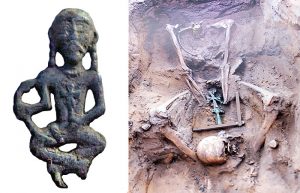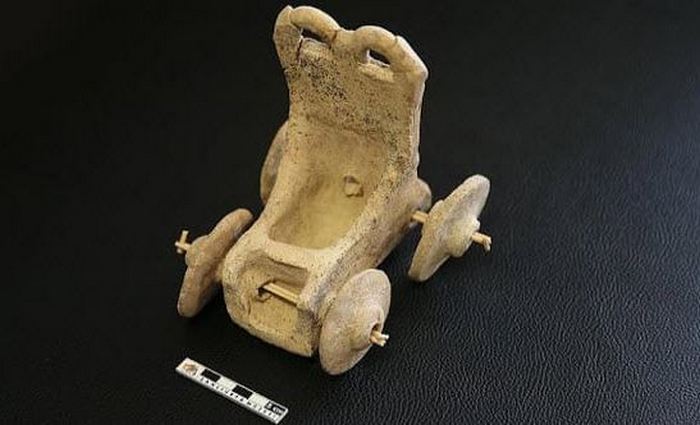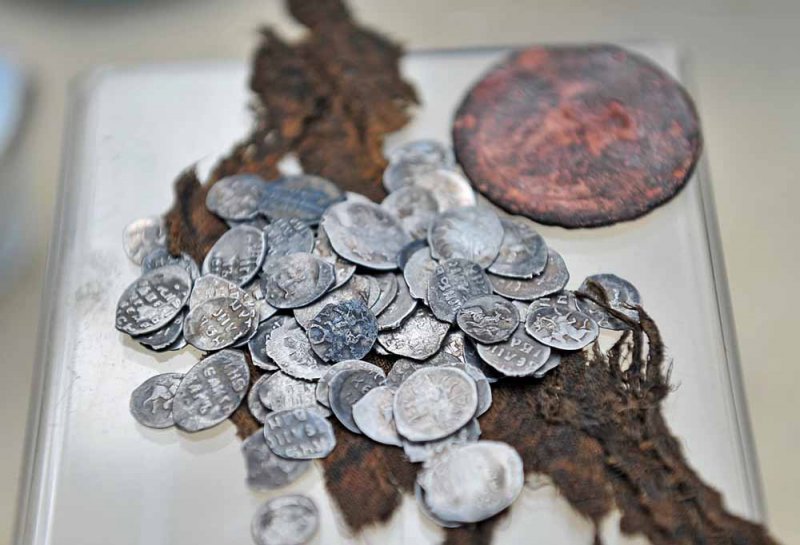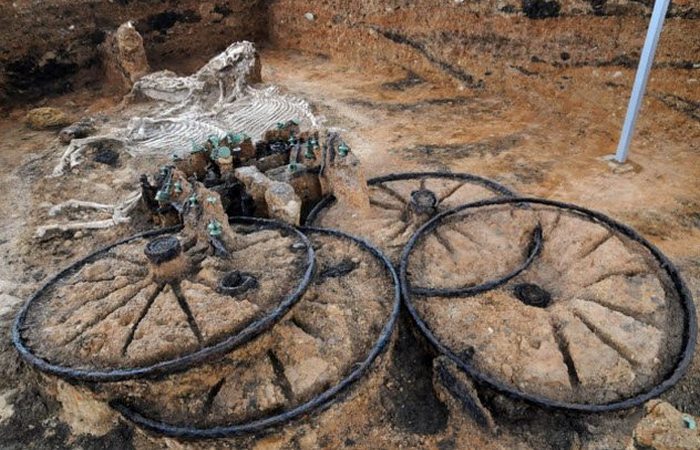Who was the legendary Troyan from “The Tale of Igor’s Campaign”: A long way to the East and back to the West
 The story that will be discussed on these pages began with a find of an unusual item on the territory of Ukraine. It was a figure of a person sitting cross-legged (we call this position “Turkish”) a person holding a snake in his right hand that stings him in the shoulder, in the left person holds a cross with blades widening towards the ends. Unfortunately, the first find, which became known to the author, suffered from a significant drawback; the figurine lacked a head.
The story that will be discussed on these pages began with a find of an unusual item on the territory of Ukraine. It was a figure of a person sitting cross-legged (we call this position “Turkish”) a person holding a snake in his right hand that stings him in the shoulder, in the left person holds a cross with blades widening towards the ends. Unfortunately, the first find, which became known to the author, suffered from a significant drawback; the figurine lacked a head.
An unusual find caused a lot of questions and the main one – who was depicted by an ancient master with such unusual symbols? An ornament resembling beads around a neck of a figure (possibly a hryvnia, a symbol of high status in society), crossed legs of a low-sitting figure, all evoked in memory a similar figure from the pantheon of gods of ancient Celts, Cernunnos (or Cernunns), (Horned).
An excellent image of this god is known on the chased bas-relief of a silver cauldron.
However, an essential detail in the image of the figure found in Ukraine was the image of the cross, very similar to the well-known Byzantine crosses. Therefore, the search had to be conducted in line with the Christian tradition. It was only necessary to wait for the discovery of a similar artifact with a whole head. And such a find was made in the Chernihiv region of Ukraine. It immediately became clear that at the heart of the tradition of depicting these figures lies the art of nomads. The face with Mongoloid features, characteristic antennae, very much resembled the images of the faces of stone “women” who were on the steppe expanses from Altai to Ukraine and Belarus. Another characteristic feature
there were two braided pigtails on the sides of the head.
It is known that among the noble medieval Mongols (both men and women) hairstyles with two braids that were woven at the temples behind the ears were common. Of course, stone “women” have a multi-temporal origin, but in general they reflect the cult of the ancestors of various nomadic peoples. The etymology of the word “baba” comes from the Turkic “balbal”, which means “ancestor”, “grandfather-father”. In accordance with the topic of this study, we are interested in stone “women” of the Polovtsian period. Of all known types of Polovtsian stone statues, the greatest similarity is noted in the following types: 1. Images of men with a mustache and a small beard. 2. Images of men mostly without caps, sometimes with one or more braids to the waist. On some figures, one or both ears are decorated with earrings, occasionally there is a hryvnia or necklace around the neck.
The pose of the seated figure has been known since ancient times, and was not necessarily the usual manner of sitting around nomadic peoples. In this position sits the scribe of ancient Egypt, in a similar position, but a higher level (prayer) portrayed Indian gods.
Who does the bronze figure found in the Chernihiv region represent? This sounds sensational, but, according to the author, this is a depiction of the mysterious Troyan from the Lay of Igor.
What is widely known about the faith of the Mongols and other Turkic peoples before the adoption of Islam is that they professed shamanism and Tengrianism. However, this is not quite the full story. For a number of historical and political reasons, the fact that some nomadic peoples converted to Christianity before the baptism of Russia was ignored, although this was Nestorian Christianity, recognized as a heresy and Orthodoxy, and Catholics. However, there are indirect prerequisites that there is a possibility and artifacts are found confirming that the Nestorian Christianity was familiar to the tribal unions of the “Kiev culture”. Although, of course, the commitment to the pagan cult is confirmed by a sufficiently large number of found artifacts.
So consider what is known today about the history of the Christianization of the nomads. Having postponed consideration of the spread of Nestorianism in Europe, let us pay attention to its distribution in Asia. It turns out that Nestorianism was one of the most important religions along the entire length of the Silk Road. Having spread widely among the Turkic and Mongolian peoples of Central Asia: the Kerait, the Merkit, the Naiman, the Uigurs, Nestorianism penetrated into China and Japan. Thus, Nestorianism was one of the main religions in the vast territories at the end of the first millennium after the birth of Christ. Tombstones from the graves of Nestorian Christians, crosses, pendants and seals are a monument to this period. Having entered into the environment of the nomads, the new religion could not but experience the influence of the ancient beliefs of these peoples and their neighbors.



